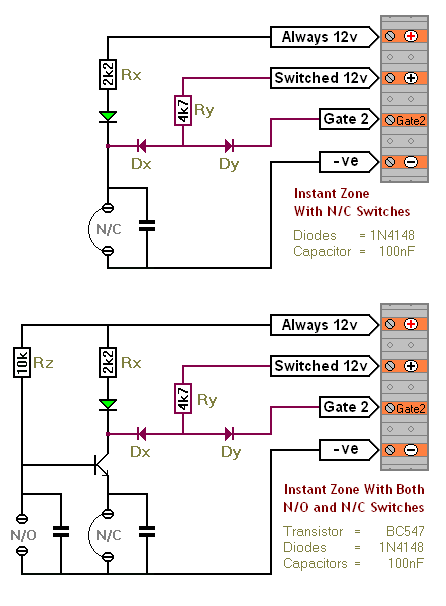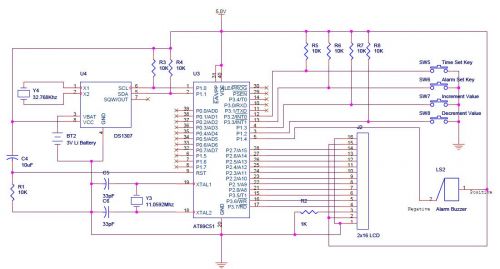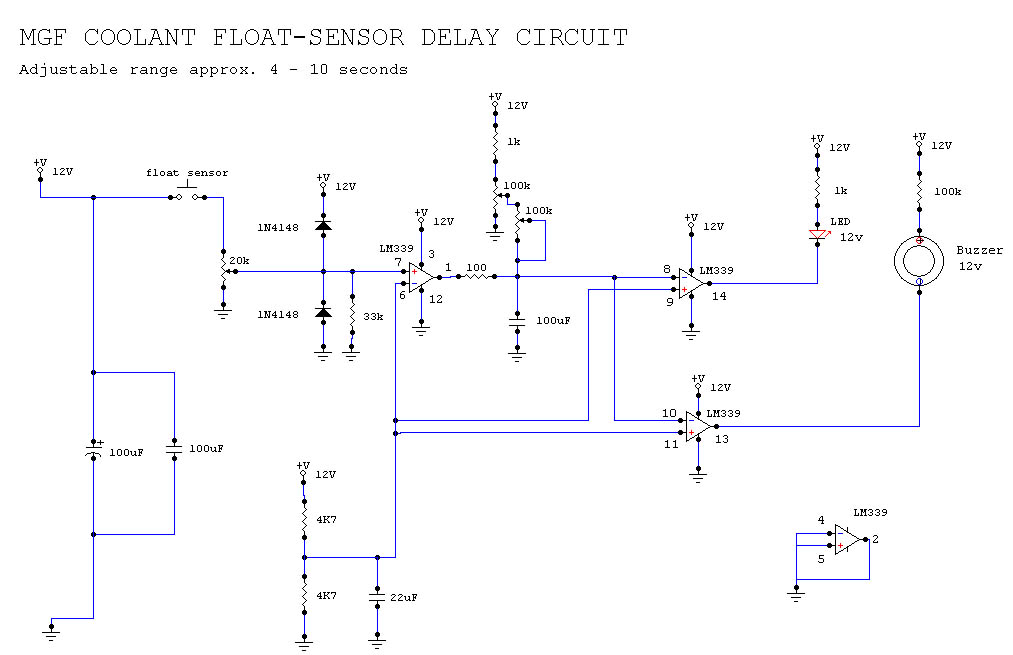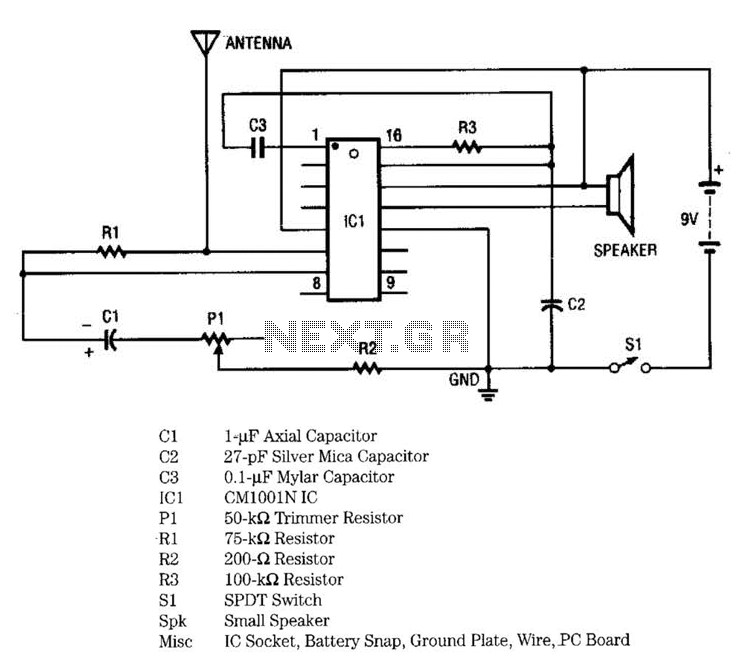
Water Activated Alarm
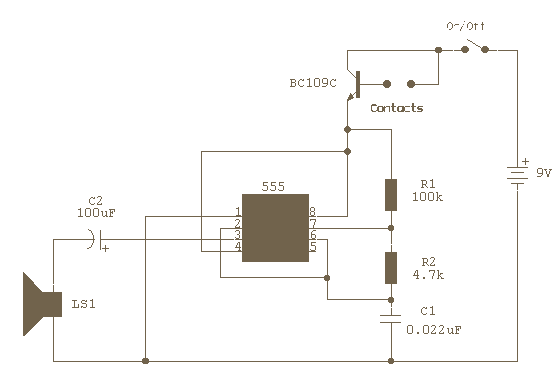
The circuit uses a 555 timer wired as an astable oscillator and powered by the emitter current of the BC109C. Under dry conditions, the transistor will have no bias current and be fully off. As the probes get wet, a small current flows between base and emitter and the transistor switches on. A larger current flows in the collector circuit enabling the 555 oscillator to sound. An On/Off switch is provided and remember to use a non-reactive metal for the probe contacts. Gold or silver plated contacts from an old relay may be used, however a cheap alternative is to wire alternate copper strips from a piece of veroboard. These will
The circuit functions as a moisture detection system utilizing a 555 timer IC configured in an astable mode to generate a continuous square wave output. The BC109C transistor serves as a switching element that controls the operation of the 555 timer based on the moisture level detected by the probes.
In dry conditions, the absence of moisture prevents any current from flowing into the base of the BC109C, keeping it in an off state. This results in no collector current, effectively disabling the 555 timer and silencing the output. However, when moisture is present, the resistance between the probes decreases, allowing a small bias current to flow from the emitter to the base of the transistor. This current is sufficient to turn on the BC109C, enabling a larger current to flow through the collector circuit.
The 555 timer, powered by the current flowing through the collector of the BC109C, begins to oscillate, producing an audible sound output. The frequency of the oscillation can be adjusted by changing the values of the resistors and capacitors connected to the 555 timer, allowing for customization of the sound produced based on application requirements.
An On/Off switch is included in the design to allow the user to manually control the operation of the circuit, providing flexibility in its use. For the moisture probes, it is crucial to select materials that will not corrode over time. Non-reactive metals such as gold or silver are ideal for ensuring longevity and reliability. Alternatively, copper strips can be used as a cost-effective solution, though they may require more frequent maintenance due to oxidation.
Overall, this circuit represents a practical application of basic electronic components to create a moisture detection system, suitable for various environmental monitoring applications.The circuit uses a 555 timer wired as an astable oscillator and powered by the emitter current of the BC109C. Under dry conditions, the transistor will have no bias current and be fully off. As the probes get wet, a small current flows between base and emitter and the transistor switches on.
A larger current flows in the collector circuit enabling the 555 osillator to sound. An On/Off switch is provided and remember to use a non-reactive metal for the probe contacts. Gold or silver plated contacts from an old relay may be used, however a cheap alternative is to wire alternate copper strips from a piece of veroboard. These wil 🔗 External reference
The circuit functions as a moisture detection system utilizing a 555 timer IC configured in an astable mode to generate a continuous square wave output. The BC109C transistor serves as a switching element that controls the operation of the 555 timer based on the moisture level detected by the probes.
In dry conditions, the absence of moisture prevents any current from flowing into the base of the BC109C, keeping it in an off state. This results in no collector current, effectively disabling the 555 timer and silencing the output. However, when moisture is present, the resistance between the probes decreases, allowing a small bias current to flow from the emitter to the base of the transistor. This current is sufficient to turn on the BC109C, enabling a larger current to flow through the collector circuit.
The 555 timer, powered by the current flowing through the collector of the BC109C, begins to oscillate, producing an audible sound output. The frequency of the oscillation can be adjusted by changing the values of the resistors and capacitors connected to the 555 timer, allowing for customization of the sound produced based on application requirements.
An On/Off switch is included in the design to allow the user to manually control the operation of the circuit, providing flexibility in its use. For the moisture probes, it is crucial to select materials that will not corrode over time. Non-reactive metals such as gold or silver are ideal for ensuring longevity and reliability. Alternatively, copper strips can be used as a cost-effective solution, though they may require more frequent maintenance due to oxidation.
Overall, this circuit represents a practical application of basic electronic components to create a moisture detection system, suitable for various environmental monitoring applications.The circuit uses a 555 timer wired as an astable oscillator and powered by the emitter current of the BC109C. Under dry conditions, the transistor will have no bias current and be fully off. As the probes get wet, a small current flows between base and emitter and the transistor switches on.
A larger current flows in the collector circuit enabling the 555 osillator to sound. An On/Off switch is provided and remember to use a non-reactive metal for the probe contacts. Gold or silver plated contacts from an old relay may be used, however a cheap alternative is to wire alternate copper strips from a piece of veroboard. These wil 🔗 External reference
